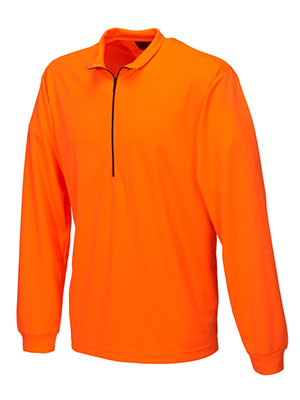Run, walk, ski or snowshoe in comfort despite the cold
Five or 6 months – a typical Alberta winter – is a long time to spend indoors. As a veteran triathlete, Dr. Ken Riess (Marketing ’91) does his best to brave the elements while exercising.
“I can only run on the treadmill and watch Netflix for so long,” says the Personal Fitness Trainer instructor. “I like to get outside for my mind and the fresh air.”
Over the years, he’s figured out how to do that safely during the deepest (wind) chills of our darkest season. Whether you’re running, snowshoeing, skiing or hiking the winter wonderland of your local trails, Riess has tips for keeping warm while staying in shape, no remote control required.
Lower your expectations
A multi-season activity such as running might as well be considered an entirely new sport in winter, says Riess. Uneven ground or icy conditions make the muscles work together in new ways to provide stability. It takes time for those muscles to strengthen and for their interactions to develop.
Don’t worry about trying to keep up with summer benchmarks, suggests Riess. “Everything just slows down in the winter so it’s probably better to go by effort than by pace.”
The 3 layers of success
Riess jokes that moms are the authority on staying warm in winter: layers, they’ll tell you, keep out the cold. But there’s a trick when it comes to exercise, he says.
“Making sure that first layer pulls moisture away from the body. If you’re dry, you’re going to be warm.” Try polypropylene for a quick-drying synthetic fabric, suggests Riess.
Put an insulator between that and an outer, wind-resistant shell. “Wool is pretty popular,” says Riess. Its thickness will depend on the weather.
To test conditions, Riess does a short loop near the house, where he can stop and change his insulating layer if necessary. “But you have to stick to the plan,” he says. Don’t linger longer inside than necessary. “You have to do that run.”
Find your footing
For runners, the average sneaker sole likely won’t offer much traction on ice and snow. Strap-on grips and cleats are good options, says Riess, but “think about what you’re going to be running on. There’s more than one model out there.”
In some cases – particularly when your route involves bare pavement – less is more, and will help conserve energy. For about a decade, Riess has used specialized metal studs that screw into the bottom of his shoes (he prefers La Sportiva’s “AT Grip Hobnails Kit”). To help push off from the forefoot, he installs them near the toe.
“Don’t wear them around the house – especially if you have hardwood.”
 Give in but not up
Give in but not up
“I’ll run in any temperature,” says Riess. “It’s more a factor of how long I’ll go.” That is, when the going gets too rough, he gets going inside.
The consistent conditions of machines such as treadmills and stationary bikes provide an opportunity.
“It’s the perfect time to think about your form.” Practice technique in comfort while waiting for milder weather.
“Listen to your body,” he says. “If it’s cold, don’t force it.”
Face the facts
Protecting your face is a challenge of outdoor winter exercise. The risk of frostbite rapidly increases when the wind chill dips below -27, according to Environment Canada. Covering your mouth and nose, however, can inhibit breathing.
The best solution is often the simplest one. A thin bandana or other light covering worn around the neck can be pulled up over the face during a headwind and lowered in a tailwind, says Riess. “It’s not a production – you can do it while you’re moving.”